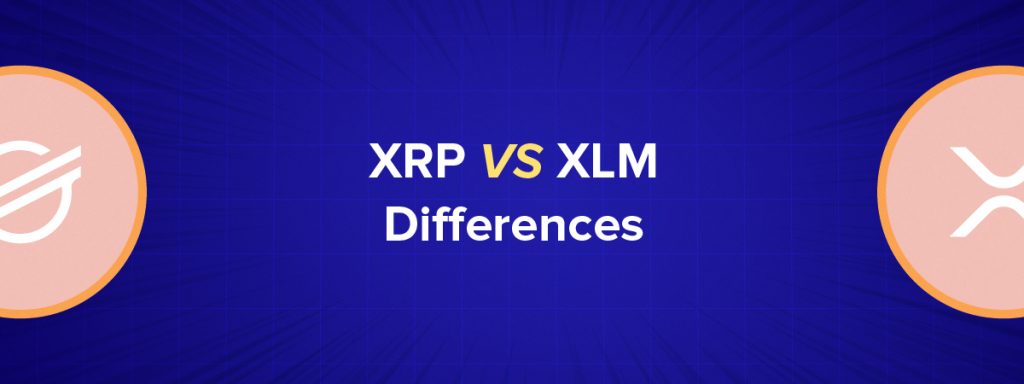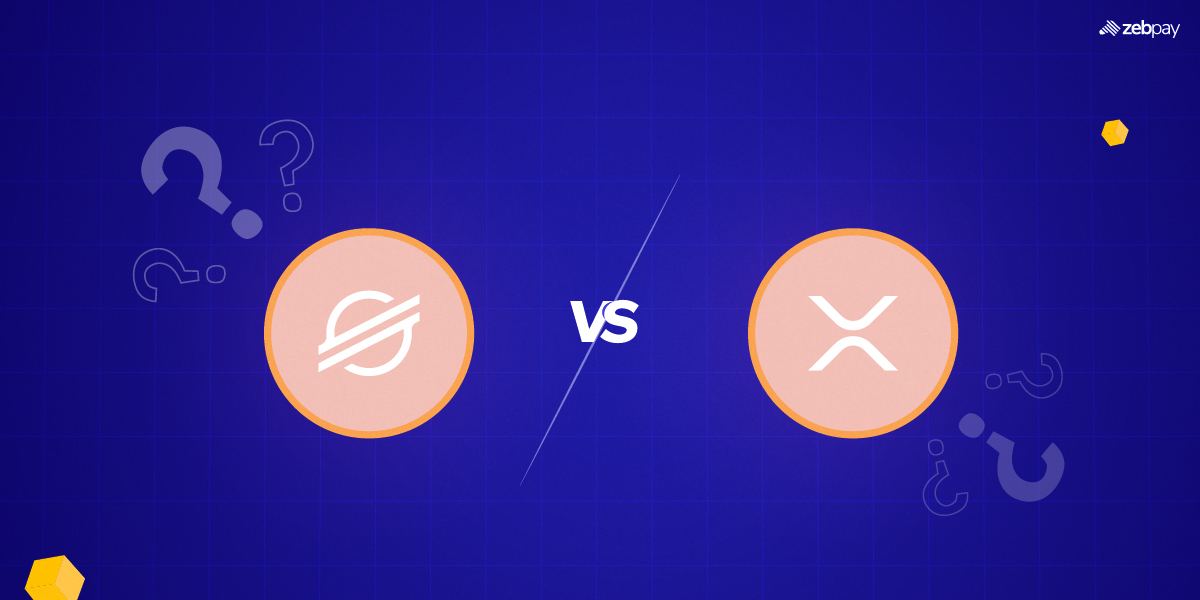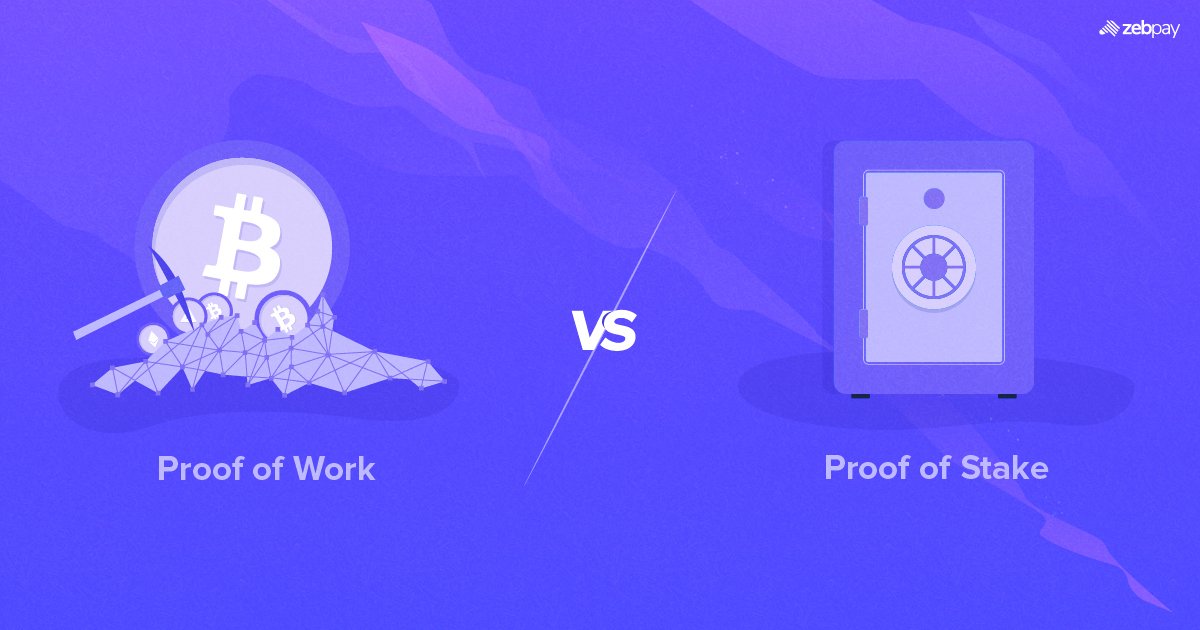Simplifying the payments landscape is one of the most essential promises of crypto tokens. While Bitcoin and other popular coins have been unable to become mainstream payment methods, other providers have already found ways to shake up traditional finance. Stellar and Ripple are two such crypto providers that assist financial institutions and payment providers settle transactions globally. But between Stellar vs Ripple, what should you choose?
What is Stellar XLM?
Stellar is a crypto token that allows users to transfer money with ease. The founder of the platform is Jed McCaleb, who also helped create Ripple. Stellar’s native token is known as XLM. Today, the Stellar Development Foundation is run as a non-profit organisation.
The platform enables its users to transfer fiat currencies as digital assets. What makes it unique is that it can serve both businesses and individuals. It can thus help customers underserved by traditional finance. Even if you don’t have access to a bank, Stellar can help you make payments anywhere.
It operates on a permissionless blockchain secured by the Stellar Consensus Protocol. This makes it easy to get started with Stellar (XLM) instantly. The SCP also processes a large number of transactions rapidly.
What is a Ripple?
Ripple is a crypto platform introduced in 2012. It generates value for financial institutions by simplifying international payments. Unlike other popular crypto tokens, Ripple operates on a permissioned blockchain. This means only approved entities can use the blockchain, thereby securing the network.
Since its function is mostly restricted to banks, the platform also does not require mining. Consensus is based on validation between the chosen network participants. No new XRP tokens are created through mining or staking.
Ripple is mainly used to compete with systems for international settlements such as SWIFT. While SWIFT takes two to three days to confirm transactions, Ripple takes mere seconds. It also makes such settlements at a very low cost.
Ripple (XRP) VS Stellar(XLM): Differences

| Feature | Stellar | Ripple |
| Usage | Highly Accessible | Restricted to Banks |
| Control | Fairly Decentralised | Centralised |
| Value Influence | Inflation | Deflation |
| Vision | Simplifying global transactions | Creating open financial infrastructure |
| Date Founded | July 2014 | September 2012 |
Usage
Stellar can be used by anyone around the world. It converts your fiat currencies into digital assets that can be transferred across borders easily. This especially assists users in areas where bank availability is low.
On the other hand, Ripple is primarily used by financial institutions. They use the platform to greatly simplify international transfers from the current SWIFT system.
Control
Anyone can create a validation node for the Stellar platform. There is no centralised authority to restrict your ability to use the blockchain. This makes it effortless for users to start using and engaging with the platform.
Ripple operates on a permissioned blockchain. Only users who are approved by Ripple can participate in its validation process. Additionally, since the network is controlled by a private company known as Ripple Labs, there is very little decentralisation.
Value Influence
100 billion XLM tokens were created when Stellar launched. The network’s rules dictate that the supply can rise by 1% every year up to a maximum of 105 billion tokens. However, Stellar users voted to drop the number of available tokens down to just 50 billion. Prices on the blockchain are thus determined by inflation.
Ripple launched with its max supply of 100 billion XRP. There can be no change in this value thanks to the network’s rules, thus making the token deflationary.
Vision
Stellar’s aim is to reduce reliance on payment providers. It incentivises users from around the world to make payments and transfer tokens that have been out of reach without banks.
Ripple instead assist financial institutions and competes with settlement systems rather than providers. It has done wonders for the efficiency and cost of cross-border transfers and simplifies business transactions.
Date Founded
In July 2014, Jed McCaleb co-founded Stellar to bring about open banking with less reliance on third parties and centralised institutions.
Ripplepay was sold to Jed McCaleb, Arthur Britto and David Schwartz in 2012, and renamed it OpenCoin. This became the ledger-based payment network we know today. Finally, in 2015, the company rebranded itself as “Ripple”.
Ripple Vs Stellar: Who Is The Winner?
Both platforms have their own advantages and have brought about considerable improvements to financial systems. However, the choice between them depends on your preferences. Stellar is a more decentralised platform which is also highly accessible to ordinary users. On the other hand, Ripple is highly secure, but can only be used by a controlled group of financial institutions.
At the time of writing, XRP and XLM prices are $0.3569 and $0.0891 respectively. XRP reached its all-time high of $3.84 on Jan 04, 2018, while XLM hit $0.93 on the same date.







